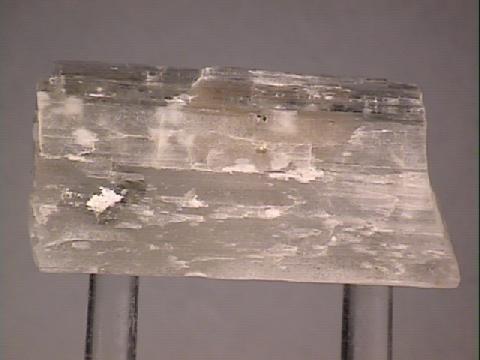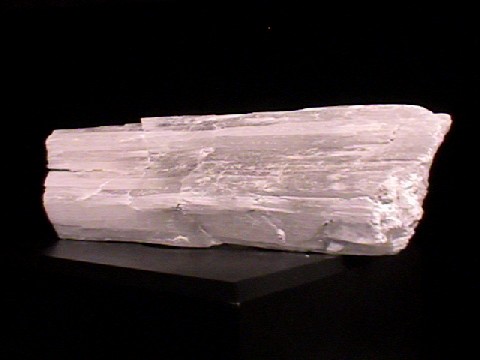 The Mineral KERNITE
The Mineral KERNITE
- Chemistry: Na2B4O6(OH)2-3H2O, Hydrated Sodium Borate Hydroxide
- Class: Carbonates
- Subclass: Borates
- Uses: an ore of boron and as mineral specimens.
Specimens
Kernite could be considered a metamorphic mineral as it is thought to form from the recrystallization of borax due to mild heat and pressure. The mineral borax is directly deposited in arid regions from the evaporation of water in intermittent lakes called playas. The playas form only in rainy seasons due to runoff from adjacent mountains. The runoff is rich in the element boron and is highly concentrated by evaporation in the arid climate. Eventually the concentration is so great that crystals of borax and other boron minerals form and accumulate to great thickness. Kernite is found at the bottom of these deposits in stratified units with some kernite crystal layers growing several feet thick.
Individual crystals can be quite transparent and appear similar to certain gypsum crystals. However, kernite is harder and forms splintery cleavage fragments. Specimens of kernite are interesting, and can make a good addition to one's collection.
PHYSICAL CHARACTERISTICS:
- Color is white or gray to colorless.
- Luster is vitreous to greasy.
- Transparency crystals are transparent to translucent.
- Crystal System is monoclinic; 2/m
- Crystal Habits include short prismatic crystals, but is more commonly found in parallel aggregates resembling vein minerals.
- Cleavage is perfect in two directions forming splintery fragments.
- Fracture is splintery due to cleavage.
- Hardness is 2.5 - 3 (harder than a fingernail)
- Specific Gravity is approximately 1.9+ (very low density)
- Streak is white.
- Associated Minerals are borax, ulexite, hydroboracite and other borate minerals.
- Other Characteristics: slightly soluable in water.
- Notable Occurrences include several localities in Kern Co., California, USA; Chile, and Turkey.
- Best Field Indicators are crystal habit, associations, locality, density, splintery cleavage, and hardness.




